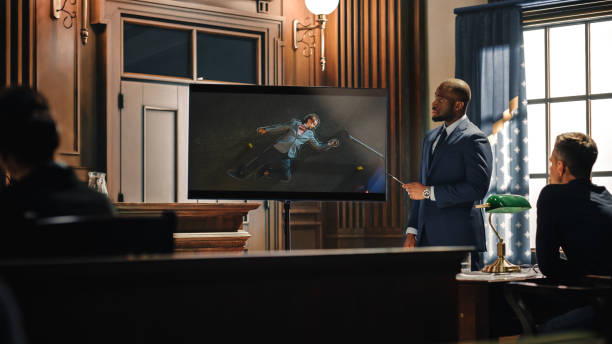
When it comes to personal injury trials, evidence and witness testimony play a critical role. For one party to be found responsible for causing another person’s injuries, the injured party must prove their case with sufficient evidence. While many factors can influence the outcome of a personal injury trial, understanding the role of evidence and witness testimony is essential.
This article will explore the importance of evidence and witness testimony in personal injury trials. We will also explain how lawyers gather and present this information to build strong cases that support their client’s claims. However, if you or a loved one was injured, consult competent legal aid to seek the restitution you deserve. You may visit JeffMorrisLawFirm.com to learn more about how attorneys can help you build a strong case.
Evidence: Building Blocks of a Strong Case
Since lawsuits are often won or lost based on available evidence or lack thereof, lawyers representing injured parties need to gather as much relevant information as possible. Evidence helps establish what happened during an event that led to someone being hurt; it consists of any material presented before the court as part of a legal objection that applies or supports either side’s argument.
Some common types of evidence used by plaintiffs in personal injury cases may include the following:
- Medical records
- Hospital reports
- Witness statements
- Photographs
- Video footage from surveillance cameras
Medical records can be vital for establishing causation between an accident and resulting injuries. These documents contain information about any medical treatment received following an accident, including diagnoses, prescriptions given, doctor modifications, etc.
Photographs taken at or around the scene can also help establish what happened leading up to an accident. Photos may show traffic conditions and voluminous texts/signs near-site observation proving liability against those responsible only after jumping down into details regarding damage inflicted because there isn’t always video surveillance near accident sites.
Witness Testimony: Providing Essential Insight
Another important factor affecting personal injury trial outcomes is witness testimony — statements given under oath by individuals who saw an accident happen or were involved in it themselves. Witness testimony can provide essential details about what happened that may not be captured by any other evidence. Two types of witnesses are typically called upon to give an account during a personal injury trial:
Fact Witnesses
The most common type of witness is a fact witness — someone who was present at the scene and had direct experience relating to what unfolded. Fact witnesses are likely laypeople with relevant information that could help establish liability for negligence or misconduct against injuries caused by individuals. An example could be a neighbor who observed every detail regarding a slip-and-fall incident outside their house and therefore understands blame, pitting the plaintiff against third-party defendants.
Expert Witnesses
In some cases, lawyers may also call on expert testimony from specialists such as doctors for guidance regarding medical knowledge, aiming to understand how severe injuries from car accidents play out. They hope eyewitnesses provide meaning to the plaintiff’s injuries and causation connection. Whenever reliance lies on scientific/other complex technical issues, such people can explain them in simple words that judges will understand better than others might try doing without them being around.
Common Objections While Presenting Evidence
There are always loopholes for which plaintiffs representing injured parties must be prepared to defend their evidential premises contractually sound under scrutiny. The following are some examples of scenarios where objections can be frequently raised:
- Relevance
- Hearsay
- Privileged communication
Relevance objection comes up when lawyers submit items as evidence unrelated to facts leading up but presenting their own limited points agenda. Plaintiffs’ hearsay of these claims often cannot ascertain trustworthiness due absence of reliability checking measures followed by data holders or suppliers, which can lead to false verdicts. All such objections must be considered deeply before crossing the line beyond which legal ethics could become question conduct and winning morally and ethically within legal constraints.
Conclusion:
The role of evidence and witness testimony in a personal injury trial is crucial in determining the outcome. It is imperative for legal professionals to gather all the necessary evidence, including physical evidence and testimonies from witnesses and experts, to build a strong case for their clients. The credibility of witnesses can significantly impact the decision made by the judge or jury. Legal professionals must also adhere to ethical standards when handling witness testimonies and ensure that they are not coerced or manipulated into providing false information. Ultimately, presenting credible evidence and reliable testimonies can increase the likelihood of success in a personal injury trial.
Published by HOLR Magazine.


